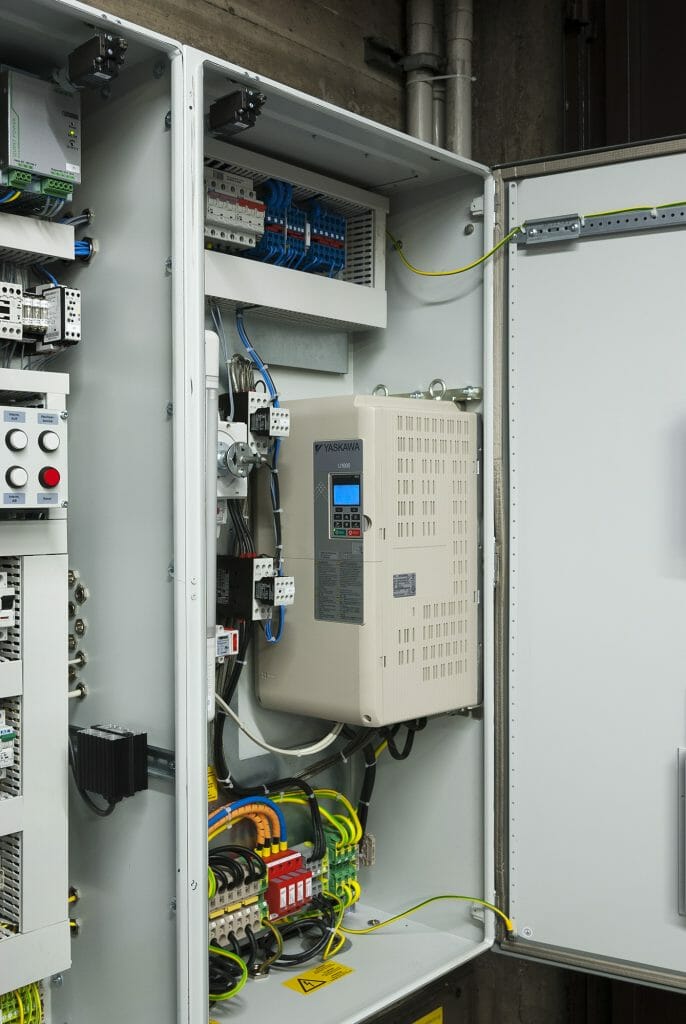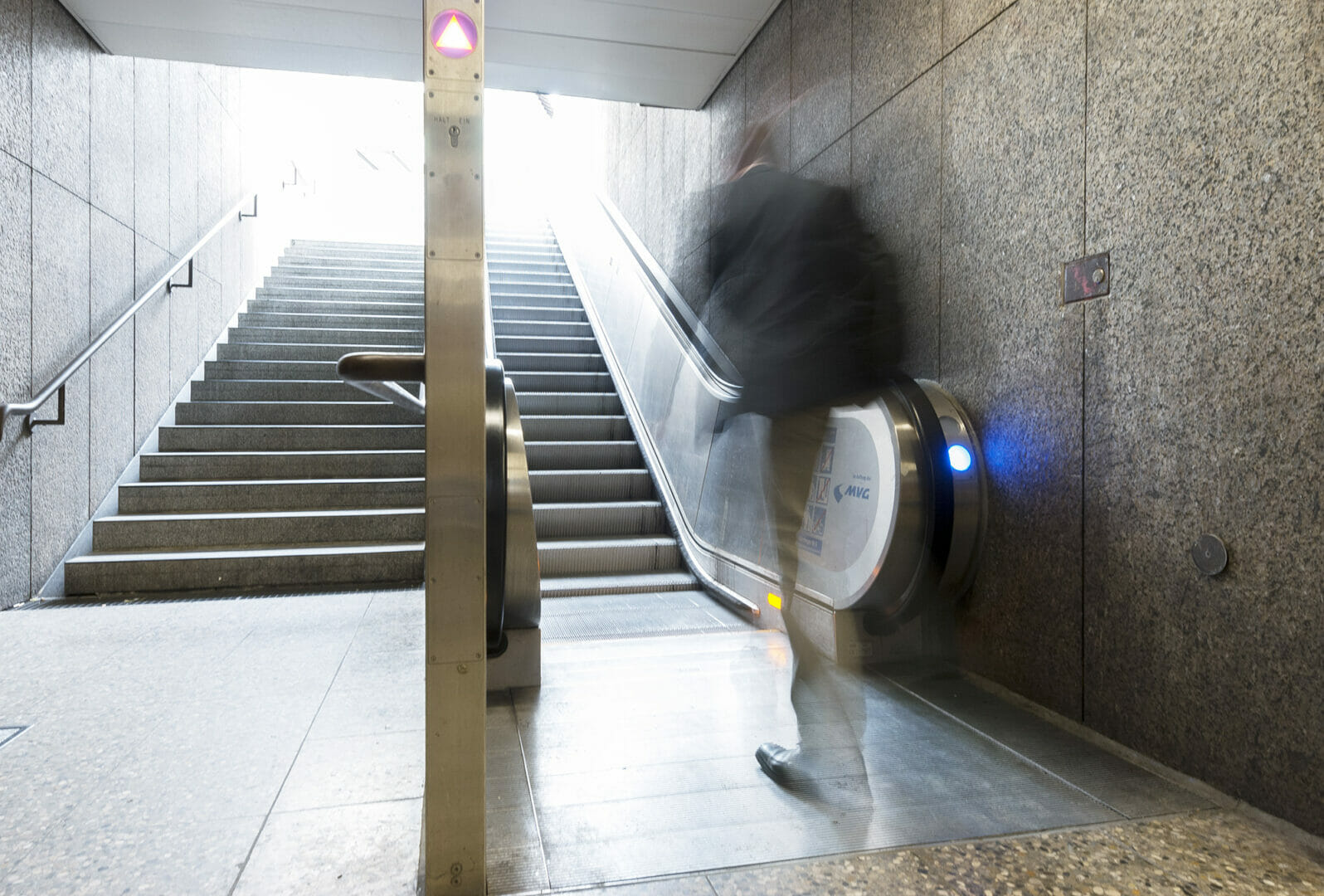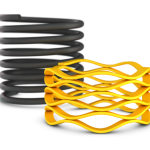The Challenge
Operating Germany’s largest escalator network in Munich which transports over half a billion people through the Bavarian capital’s subway system every year means the scale of any technical innovations can be immense. With exacting demands for safety and reliability any technical change can bring significant savings, or additional costs. Consequently, the Technicians in charge take great care when making decisions and it’s why they opted for the gradual deployment of YASKAWA’s U1000 Matrix Converters.
Under the motto ‘Simply Mobile’ the network operators Münchner Verkehrsgesellschaft (MVG) a subsidiary of Stadtwerke Munchen (SWM) deploys trains and buses in subway and tram stations. To give an idea of the scale of the network it also has 770 escalators which compares with around 450 currently operating on the entire London Underground. Mario Princip head of the MVG supported by a team of technicians has to ensure that the system operates around the clock without interruption and comments “A high level of reliability is extremely important and it’s also strategically significant. It’s not just a question of addressing the passenger’s needs for comfort and convenience, it’s also an important operational matter because without the escalators the passengers cannot enter and exit the stations at the required speeds”.
Innovation and In-house control optimises reliability
With exacting demands in terms of safety and reliability and the need to maintain hundreds of escalators any technical change has significant implications so the escalator engineers are meticulous in assessing any new optimisation opportunities. The reality is it’s an ongoing process of modernisation in an environment that is highly resistant to standardisation, because after all, the service life of an escalator is around 30 years. At any one time, multiple generations and models from different manufacturers are in use across the network, while the individual spatial conditions are equally diverse.
Daniel Mayer, responsible for the electro technology of the escalators says, “In a nutshell, every system is unique”. MVG tackles this challenge by drawing on its own powers of innovation, with one example being the manufacturer-independent escalator control system which they developed themselves. This means each escalator can be maintained by in-house personnel, faults can be rectified faster and costs for spare parts and conversions are minimised.
Exploring the Benefits of Inverter Drives
MVG has been using inverter drives since before the development of the new control system the benefits of which quickly became apparent over conventional drives in every day operation on upward escalators. The inverter control enables variable start-up and stopping, which means not only more comfort for the users, but also protects the mechanisms. However, as impressive these benefits were, MVG had been searching for a suitable solution for downward escalators. While many systems work with conventional braking resistors, the resulting waste heat has to be dissipated safely, not least for fire safety reasons. The motor windings can also serve as ‘braking resistors’, converting energy into heat, but only to a limited extent and not continually. It would also be possible to supplement an inverter drive with an additional regenerative unit, but this is not feasible due to limited space in escalator control cabinets.

The Solution
Eventually a solution was found in the technology that is still rarely used in low voltage applications, a matrix converter that combines the inverter and regenerative unit in a single device. In the spring of 2016 MVG tested the capability of the few market-ready options available using their own simulator. Among the specific escalator requirements was a flying start function to ensure synchronised start-up after automatic deactivation and all electrical components have to operate year round at outside temperatures. YASKAWA’S newly developed U1000 was one of the units tested and as far as MVG were concerned, it ticked all the boxes. First introduced by Yaskawa in 2014 the U1000 matrix converter is a highly efficient, regenerative direct inverter for powering induction and permanent magnet machines, with or without speed sensors.
Today the range covers a wide power range from 2.2 to 500kW and thanks to its innovative design is capable of direct regeneration and doesn’t require any DC bus capacitors. No space is needed for an additional regenerative unit and like all Yaskawa 1000 Series drives the U1000 is designed for 10 years of maintenance-free, continuous operation.
Application Specific Benefits
The regenerative energy that can be fed back into the system to meet other needs in the building such as lighting can be a significant benefit, however this was not the main reason that prompted MVG’s to select the U1000 for their escalator application. More importantly the U1000 removed the need for regenerative resistors, greatly simplifying the cooling, or ventilation of the system. Another advantage of the Yaskawa system was the upkeep of the grid quality during regeneration. The line currents during operation of the U1000 are nearly sinusoidal in both motor and regenerative mode and harmonics are reduced to a minimum. Whilst this reduces losses in network components, such as transformers, cables and lines, it improves the efficiency of the whole system. Furthermore, this significantly reduces potential interference with other system components which in turn helps to prevent failures and subsequently removes the need for complicated procedures and the unavoidable downtimes associated with identifying the cause.
The U1000 already features an integrated EMC filter removing the need for external components such as DC reactors or LC filters. Nevertheless, the space requirements are still up to 50% with conventional integrated solutions with sinusoidal input and regeneration. It also features a built-in SIL3 STO input to allow for high machine safety requirements and Yaskawa also offers options for all common fieldbuses making connection to EtherCAT, Powerlink, Profinet, Profibus, Ethernet IP and other systems extremely straightforward.
The Future
Following testing of the latest U1000 matrix converters at new subway station locations where space is even more limited, the converters have been duct mounted on the side wall of control cabinets meaning the cooling module is on the outside. The device is connected to the MVG control system so that current operation status can be monitored in real-time, providing reliable test data at all times.
Based on initial results from these new applications, Mario Princip is satisfied with the solution confirming, “We’ve addressed the main issues at these even more demanding sites and the Yaskawa U1000 is operating just as we’d hoped”.





